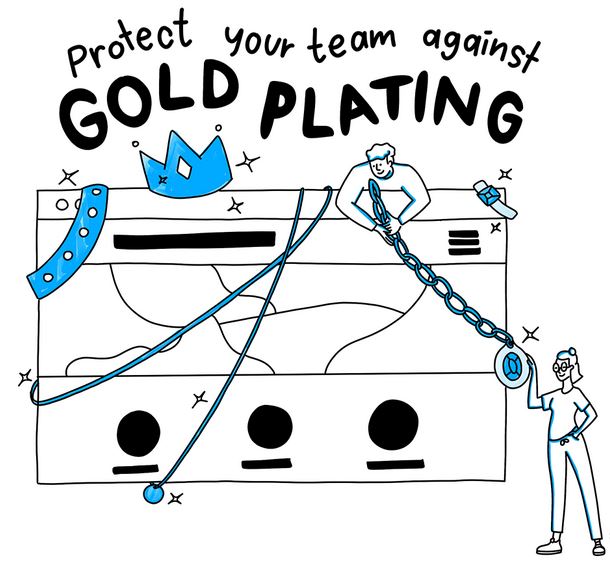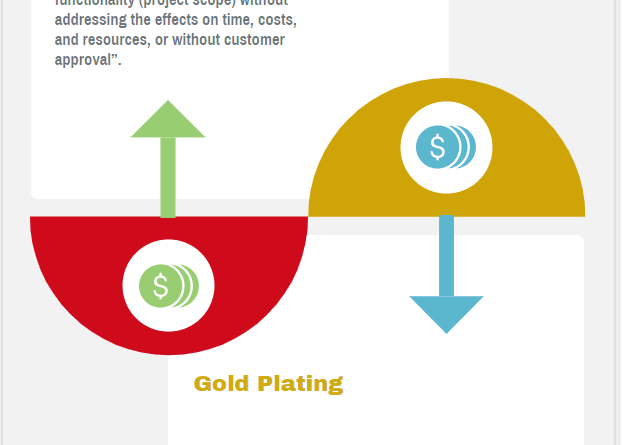
In the world of project management, there exists a fascinating phenomenon known as gold plating. Have you ever wondered what it is and how it impacts a project? Gold plating refers to the tendency of project teams to go above and beyond the required scope of work, adding additional features or functionalities that were not initially requested by the client or stakeholders. While it may seem like it enhances the project, gold plating can have unintended consequences on timelines, budgets, and overall project success. It’s crucial to understand the reasons behind gold plating and its potential implications in order to effectively manage projects and ensure their success.
Understanding Gold Plating in Project Management
Gold plating in project management refers to the practice of adding unnecessary or excessive features to a project that are not part of the agreed-upon scope. It involves going beyond the requirements and specifications set by the client or the project stakeholders. While it may seem like a nice gesture to deliver more than what was promised, gold plating can have negative consequences on project success and should be avoided.
Definition of Gold Plating
Gold plating can be defined as the act of embellishing a project by adding features, enhancements, or deliverables that are not requested by the client or are beyond the scope of the original project plan. It occurs when project team members, feeling the desire to exceed expectations, often without the proper authorization, go beyond what was agreed upon to deliver more than what was required.
Reasons for Gold Plating
Gold plating usually stems from good intentions. Project team members might engage in gold plating to demonstrate their expertise, impress the client, or showcase their commitment to delivering excellence. It may also be driven by personal motivation or a desire for recognition and appreciation. However, while it may initially seem like a positive contribution, it can lead to unintended consequences.
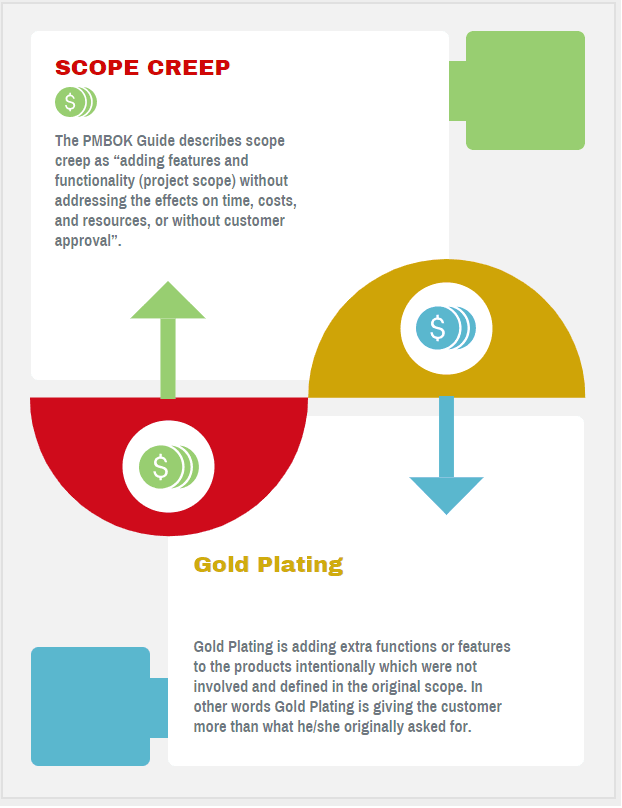
Impact of Gold Plating on Project Success
While gold plating may be seen as a positive gesture, it can have a significant impact on project success. It can lead to scope creep, which refers to the uncontrolled expansion of project scope beyond what was originally planned. This can result in delays, increased costs, and decreased overall project efficiency. Additionally, gold plating can divert resources, both human and financial, away from essential project activities, potentially jeopardizing the successful completion of the project.
Identifying Gold Plating in Projects
It is important for project managers and team members to be able to identify gold plating within a project. Signs of gold plating include delivering additional features that were not part of the agreed-upon scope, spending excessive time on non-essential tasks, and exceeding project budgets without prior approval. It is crucial to regularly review project deliverables and compare them against the defined scope to identify any instances of gold plating.
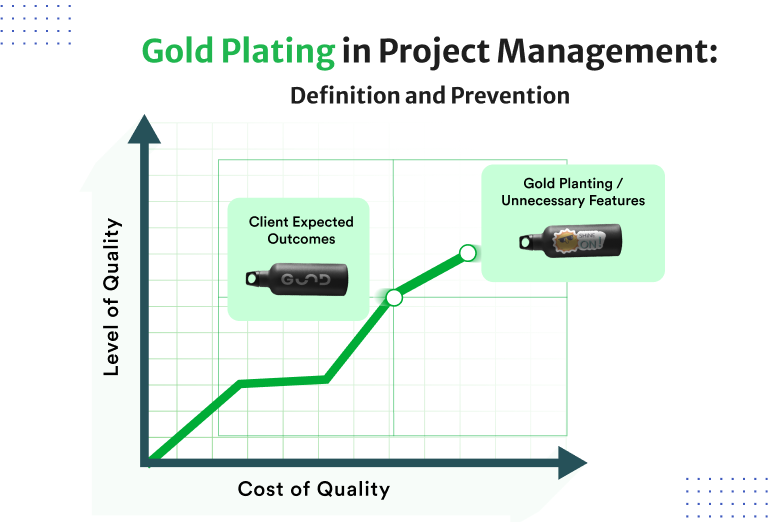
Difference Between Gold Plating and Scope Creep
While gold plating and scope creep are related concepts, they are not the same thing. Scope creep refers to the gradual expansion of a project’s requirements and expectations, leading to an increase in project scope. It often occurs due to changes in stakeholder expectations, evolving business needs, or unclear project requirements. Gold plating, on the other hand, involves adding extra features or deliverables that are not part of the original scope. It is an intentional act by project team members to exceed expectations, often without proper authorization.
Negative Effects of Gold Plating
Gold plating can have several negative effects on a project. It can lead to scope creep, as additional features and deliverables increase the project’s scope beyond what was planned. This can result in delays, increased costs, and a loss of focus on essential project activities. Moreover, gold plating can undermine client satisfaction, as the added features may not align with the client’s needs or expectations. It can also create confusion and misalignment among team members, leading to communication breakdowns and decreased overall project efficiency.
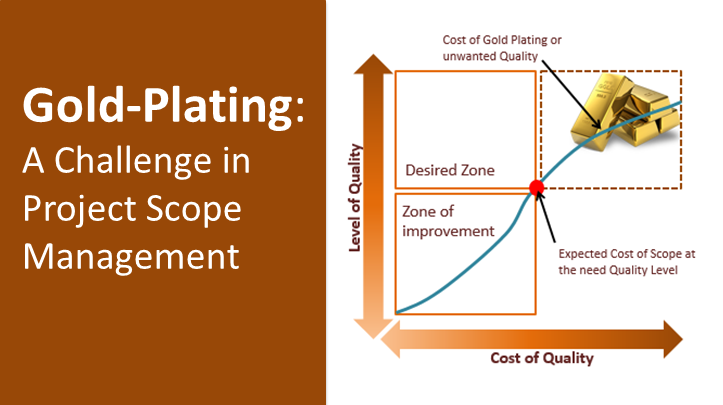
Preventing Gold Plating
Preventing gold plating requires a proactive approach by project managers and team members. The following strategies can help mitigate the risk of gold plating:
-
Clearly define the project scope: It is essential to have a well-defined and agreed-upon project scope at the outset. This ensures that everyone involved understands what is included and what is not.
-
Establish effective change management processes: By implementing a robust change management process, all proposed changes to the project scope can be evaluated and approved before implementation. This prevents unauthorized gold plating.
-
Provide clear expectations and guidelines: Project team members should be aware of the project’s goals, objectives, and scope. Clear guidelines can be set to prevent them from engaging in gold plating without appropriate authorization.
-
Foster open communication: Encourage team members to communicate openly about potential enhancements or additions. By fostering an environment of transparency, team members can seek approval before implementing any changes that go beyond the project scope.
Addressing Gold Plating in Project Management
If gold plating is identified within a project, it is important to address it promptly and effectively. The following steps can help in addressing gold plating:
-
Review the project scope: Assess whether the added features or deliverables align with the project’s objectives and scope. If they do not, consider removing or modifying them to bring the project back within its defined boundaries.
-
Evaluate the impact: Determine the potential impact of the gold plating on the project timeline, budget, and resources. This evaluation will help in making informed decisions about whether to keep or remove the extra features.
-
Communicate with stakeholders: Engage in open and transparent communication with project stakeholders, including the client, to discuss the identified gold plating and its implications. Seek their input and approval before proceeding with any changes.
-
Adjust the project plan: Revise the project plan, if necessary, to accommodate any approved changes resulting from gold plating. This ensures that the project remains aligned with stakeholders’ expectations and objectives.
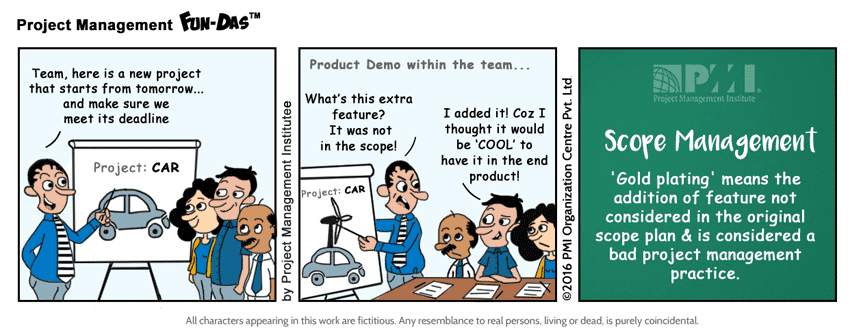
Communication and Gold Plating
Effective communication plays a crucial role in preventing and addressing gold plating. It is essential to establish clear channels of communication among all project stakeholders, ensuring they understand the project scope, goals, and expectations. Regular communication allows for open discussions, where team members can voice any concerns or suggestions without resorting to unauthorized gold plating. Maintaining a transparent and collaborative communication environment promotes a shared understanding of project requirements and facilitates timely decision-making.
Best Practices for Gold Plating Prevention
To prevent gold plating within project management, consider adopting the following best practices:
-
Set realistic project goals: Define achievable project goals and communicate them clearly to the project team. This ensures the team understands the desired outcomes and minimizes the temptation to engage in gold plating.
-
Conduct regular scope reviews: Regularly review the project scope to ensure it accurately reflects the project’s objectives and requirements. This helps in identifying any instances of gold plating promptly.
-
Encourage stakeholder involvement: Involve stakeholders throughout the project lifecycle and seek their input when considering any changes to the project scope. This ensures that any additions or modifications are aligned with their expectations and needs.
-
Implement effective change control: Establish a change control process that requires formal approvals for any proposed changes to the project scope. Formalizing the change process helps minimize unauthorized gold plating.
In conclusion, gold plating in project management may initially seem like a well-intentioned practice, but it can have detrimental effects on project success. It is crucial for project managers and team members to understand the difference between gold plating and scope creep, identify signs of gold plating, and take proactive steps to prevent and address it. By fostering effective communication, establishing clear guidelines, and implementing best practices, project teams can deliver successful projects that meet stakeholder expectations within the defined scope.
